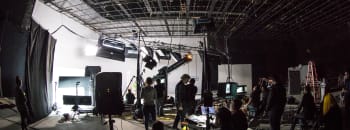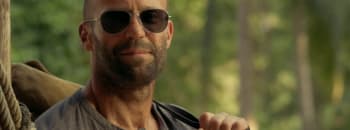TIFF: Underwater DoP on filming refugee drama The Swimmers
Marine Department's Jonjo Stickland talks to Priyanca Rajput about filming TIFF title The Swimmers in Belgium, Turkey and the UK
By Priyanca Rajput 13 Sep 2022
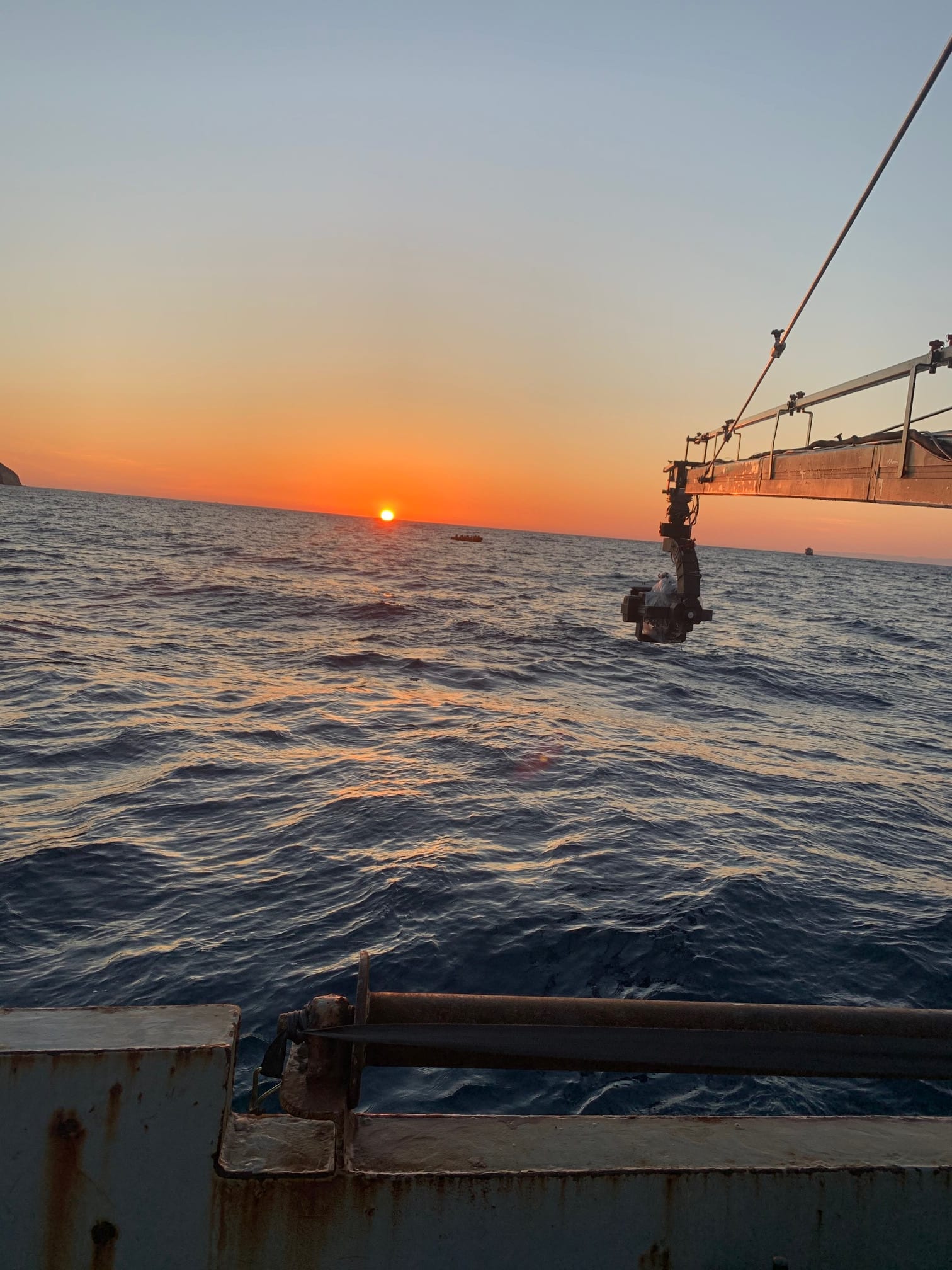
From doubling crew for cast to negotiating 25 people on a boat designed for five, marine coordinator, Jonjo Stickland, tells KFTV about bringing the incredible true story of two sibling refugees to the big screen.
Directed by Sally El Hosaini, the TIFF 2022 Opening Night Gala film chronicles swimming sisters Yusra and Sarah Mardini’s journey as refugees - from war-torn Syria all the way to the 2016 Rio Olympics.
Despite early preparations between Jonjo Stickland, director of UK-based Marine Department, and Working Title, principal photography was suspended just four days before shooting, due to the COVID-19 pandemic in 2020. After Netflix subsequently acquired distribution rights, production resumed in April 2021.
Marine Department facilitated the shoot which comprised of multiple marine locations, including Belgium’s Lites Studios (using the water tank for underwater and storm sequences); Turkey’s Baden Buku Beach (refugee boat landing in Lesbos), Karasu Beach in Kuşadası (refugee boat launch), Grand Belish Hotel (finale), Yeniliman (open water sequences) and ITU Olympic Pool in Malask (national competition) and London’s Aquatic Centre (Rio Olympics).
When Stickland was approached by the producers early on, it was clear director El Hosaini wanted a faithful retelling of the sisters’ story. This raised certain questions for the underwater DoP — such as how to get the two heroes travelling across the Aegean/Mediterranean Sea after abandoning the dinghy, the safest way to film a storm sequence at night, and how best to get the sisters to look like ‘professional athletes’. With the right resources, a flexible crew and a committed cast, however, El Hosaini’s vision was realised.
Filming comprised of three main elements and took just over a week to film, reveals Stickland. “First is the boat departing — that's where they all get into the boat and they all leave the beach to go on this journey. The next element was actually in the middle of the sea, to give the impression they were miles from anywhere – completely on their own and Sally wanted to really sell the fact that they were isolated in quite a perilous condition, and the third part was the arrival - where they actually made it back to land and arrive safely on the beach.”
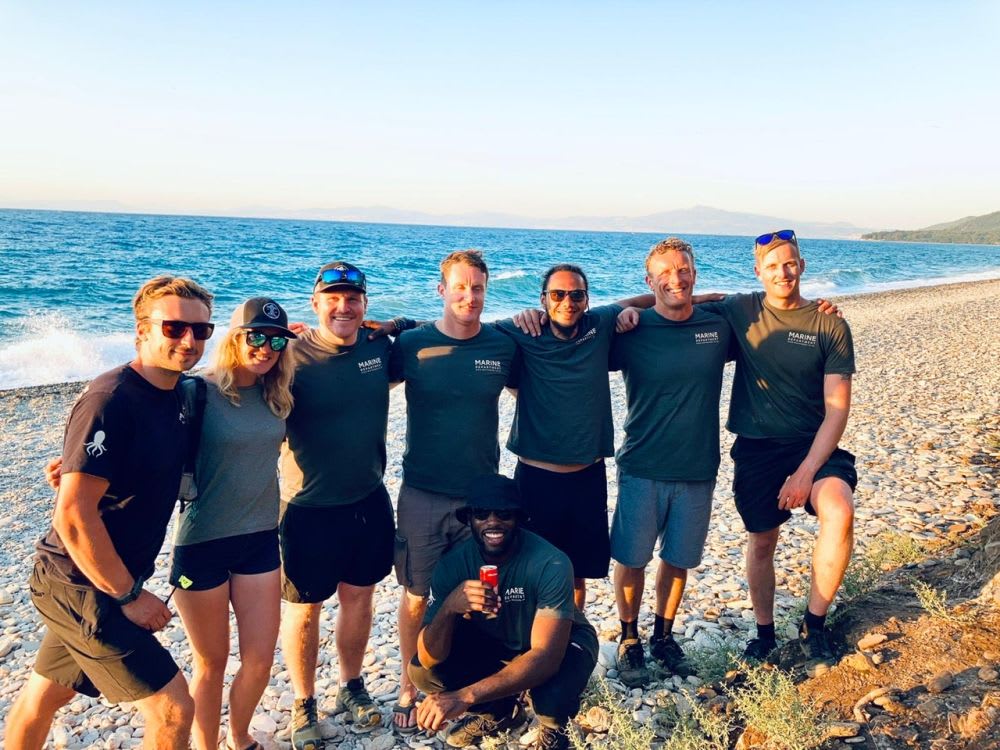
The Swimmers Marine Department crew deployed from UK. Credit: Marine Department
Belgium’s Lites Studios
Because of the inherent limitations placed on manipulating open water, Stickland suggested to producers that the storm sequences would benefit from Belgium’s Lites Studios, admitting it’s the “most advanced water facility in the world”.
“In the story, the boat at night gets hit by a storm. The best place to create a storm is in a tank and the best tank to create a realistic storm is Lites Studios in Belgium, says Stickland. We pushed early to go to Lites studios as we knew we would be able to fully control the environment and get good production value.
For the storm, Stickland knew it would provide the best production value. “[Lites] has an ability to flood their stage floor — they have a deep tank which is also 9 metres and they can flood the rest of the stage to a metre to almost create an indoor exterior tank… so a large surface tank. And they have inbuilt wave machines which creates realistic seas and you can dial up those waves and kill those waves instantly on a control panel. So in terms of safety we’ve got full control.”
Filming at sea and doubling crew for cast
While only a four-man team was required for the pool shoots, Stickland had to build up his crew up at sea because they were a lot more spread out as it was a larger operation. “We took an eight man crew to Turkey, double the amount we needed at the pool. At sea we are not only in charge of looking after the cast on the water but also the crew.”
”Not only did we have 24 cast, but we also had 60 plus crew on the water, all of whom are our responsibility. The lead cast were paired throughout with the same marine crew, those that were with them at the pool, for reasons of consistency and confidence.
Stickland also had to suggest two of his own crew members join the cast on the boat, for safety purposes.
“I had two of my crew on the boat at all times, one by the engine and the other nearer the bow. This gave me eyes and ears in the boat, allowing us to sort any issues before they developed. El Hosaini even gave my crew a couple of lines!“
Having them on board enabled more effective radio communication between crew and cast, so they became responsible for main cast and reporting back to Marine Department.
“My crew would go in and check on the cast, give them sustenance and stay with them until we set up the next shot. My crew & the cast developed a solid relationship.”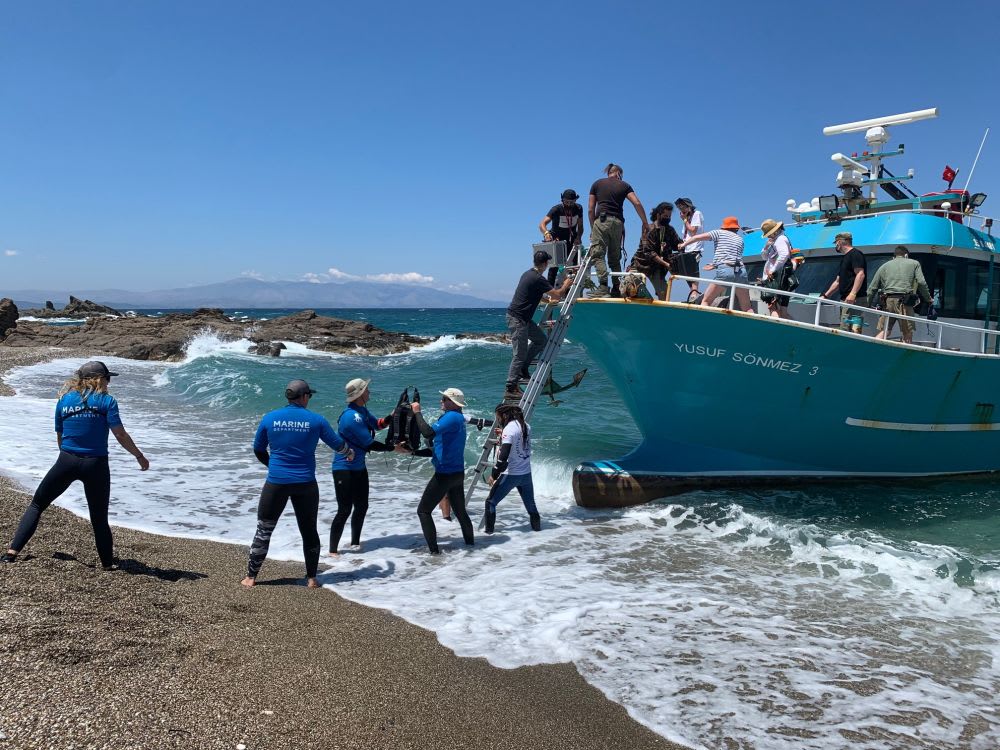
Offloading kit and crew onto the location beach. Credit: Marine Department
Olympic-level training
For an authentic portrayal of the sisters’ sporting ability and agility, a rigorous training regime was implemented before the shoot. “We needed to get the girls up to a level where they look like professional athletes or Olympics swimmers, not only out the water but also in the water.
“We weren’t going to ask them to swim a 500 metre race, but we did need beats of them swimming technically well, freestyle and butterfly. [El Hosaini] wanted to film Manal and Nathalie diving off the starting blocks so we had to get them to a level that looked credible,” Stickland noted. 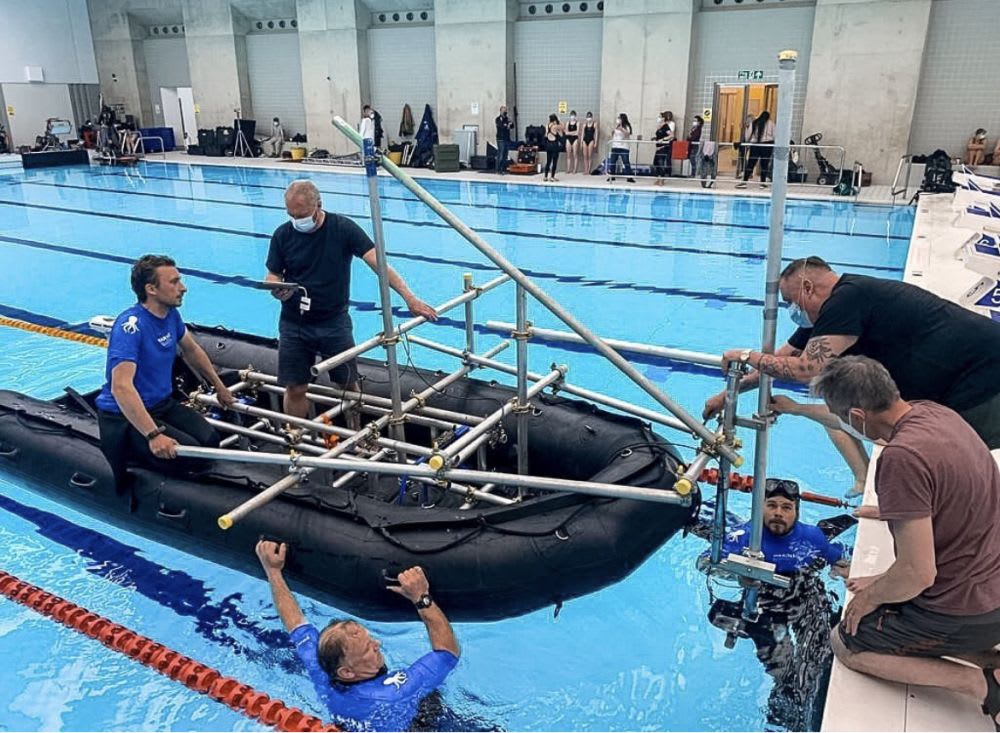
Testing a camera rig in the pool. Credit: Marine Department
Managing overflow
The underwater DoP revealed one of the shoot’s major challenges was hosting a boat of 25 people designed for five. “It was cramped, it was crowded, it was hard,” he admitted.
“[El Hosaini] wanted to get as many people on that boat as possible to give the sense that it was crammed. The trick is to find a way of having a large amount of people on a small boat, keeping them safe and comfortable while selling the shots on camera to keep the director happy. It's a juggling act.”
To overcome the challenge, Stickland sea-trialled the boats with double the recommended load in weight to determine the effects.
“We agreed a maximum of 24 cast on the boat with Sally, which was 17 passengers over the boat's manufacturers maximum. We needed to sea trial the boat with the additional weight as I wasn’t sure if it would hold together. We calculated the rough weight of 24 people then added another 50% for good measure. We put the boat in the roughest water we could find and pushed it as hard as we could. It fared surprisingly well. We knew then what we could expect from the boat on the day.
“With 24 cast the boat isn’t much of a boat, it was semi submerged and completely awash. We treated it like we had 24 people in the water on a prop, not a boat. We had safety boats in the vicinity at all times that allowed us to accommodate all 24 cast. We were ready for a mass rescue at any point.”
Insights and learning experiences
Despite the challenges, Stickland realised anything is achievable with “enough forethought and planning in advance” and made for an eye-opening filming experience.
“After the first day shooting on location in Turkey my crew and I were quite sombre at dinner. We got talking about what it must be like for the people doing these crossing and how desperate they must be to undertake them. A lot of my crew had been talking with the cast about their real life experiences and they were sharing their stories. It made us all realise just how lucky we were to have a safe place to call home. The effect it had on us all we weren’t expecting or prepared for. It was a pleasure to take part in the process of telling that particular story, it was humbling.”
Latest news & features
Featured profiles
Promote your services with KFTV
Choose from three profile types - Basic, Silver and Gold
Create ProfileWe offer a range of display advertising opportunities.
Learn More
